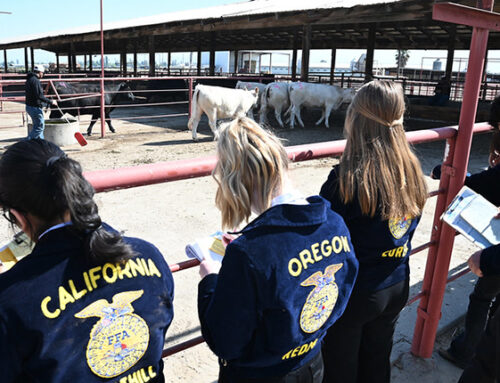Facing an estimated $28 billion budget deficit, Governor Jerry Brown today (Jan. 10) released his 2011-12 state budget proposal that calls for a $500 million reduction in state support for the California State University, equal to an 18 percent reduction. The proposed $2.2 billion in state support for CSU is equivalent to 1999-2000 levels even though the university system currently serves nearly 70,000 more students.
“While we understand the administration has limited options, higher education is the state’s main economic driver, and we cannot improve our economy without an educated workforce,” said CSU Chancellor Charles B. Reed. “The magnitude of the budget reduction in one year will have serious impacts on the state’s economy, limit access for students seeking entrance into our universities, and restrict classes and services for our current students.”
The proposed $500 million reduction in state support for the CSU is also a “best case” scenario because it assumes an extension of the current temporary tax increases due to expire at the end of the fiscal year. The governor is seeking to hold a special election in June to ask voters to approve the tax extensions, which will provide approximately $10 billion in revenue for California. However, if the tax extensions do not pass, the CSU may face additional reductions beyond the proposed $500 million cut for 2011-2012.
CSU plans to redouble efforts already underway to identify operational efficiencies throughout the system, but officials emphasize that a cut of this magnitude will have other impacts.
“As we have before, we will need to look at every option in order to develop a comprehensive plan to address a reduction of this magnitude,” said Reed. “There will inevitably be difficult choices as we move forward, and no single solution will be enough to meet this challenge.”
As part of an overall plan to address a two-year $625 million reduction during 2009-2010, the CSU implemented a number of actions including enrollment cuts, employee furloughs, student tuition increases, workforce reductions, cuts to administration, and other cost cutting measures. In 2010-2011, CSU did receive a partial restoration of its budget, but the amount of support is still at approximately 2005-2006 levels, and the system faces mandatory cost increases such as health care benefits and energy that the general fund increase does not cover.
CSU had been in the process of ramping up its enrollment for this spring after two years of enrollment cuts totaling 40,000 students. The budget proposal announced today means the system will likely have to restrict new enrollments once again as campuses start the admissions process for students who have applied for fall 2011.
“We will work with the administration and the legislature to minimize, as much as possible, impact to students. However, the reality is that we will not be able to admit as many students as we had been planning for this fall,” added Reed.
“Over the next few months, our 23 campuses will be faced with very difficult admission decisions as they try to manage this reduction. For students and parents, the uncertainty of the situation is even harder.”
Overall, the governor’s budget reduces state support for all of California’s public higher education institutions by $1.4 billion. The University of California is also facing a proposed $500 million budget reduction with $400 million proposed to be cut from the California Community Colleges. Collectively, these systems graduate 272,000 students each year, and educate more than 3.5 million statewide.
The three leaders of the higher education systems, University of California President Mark Yudof, California State University Chancellor Charles B. Reed and California Community Colleges Chancellor Jack Scott, released a joint statement in response to Gov. Brown’s proposed budget:
“It is clear the governor wants to engage Californians in a full and open discussion about what size of government they are willing to support. As leaders of the state’s three public higher education systems, we are eager to participate in that conversation. Given the vast demographic shifts underway in California, now is not the time to shrink public higher education, but to grow it. The road to recovery from this recession and prosperity far beyond it runs straight through our many campuses. These universities are the economic engines of California.”



